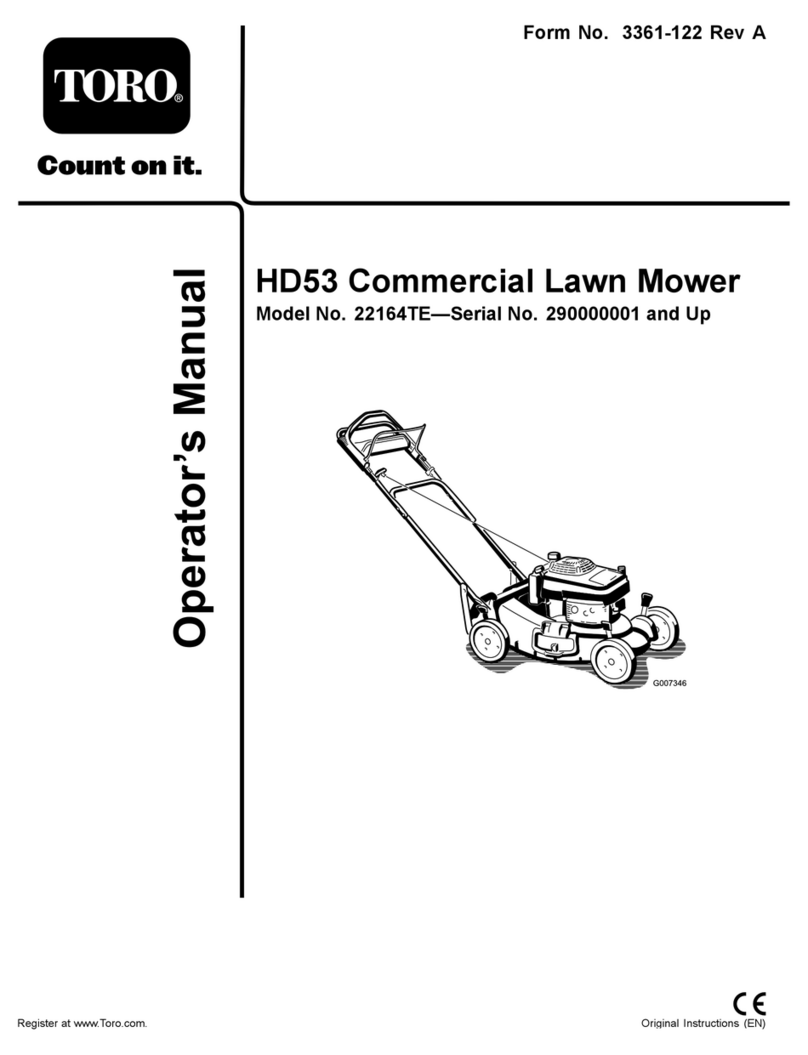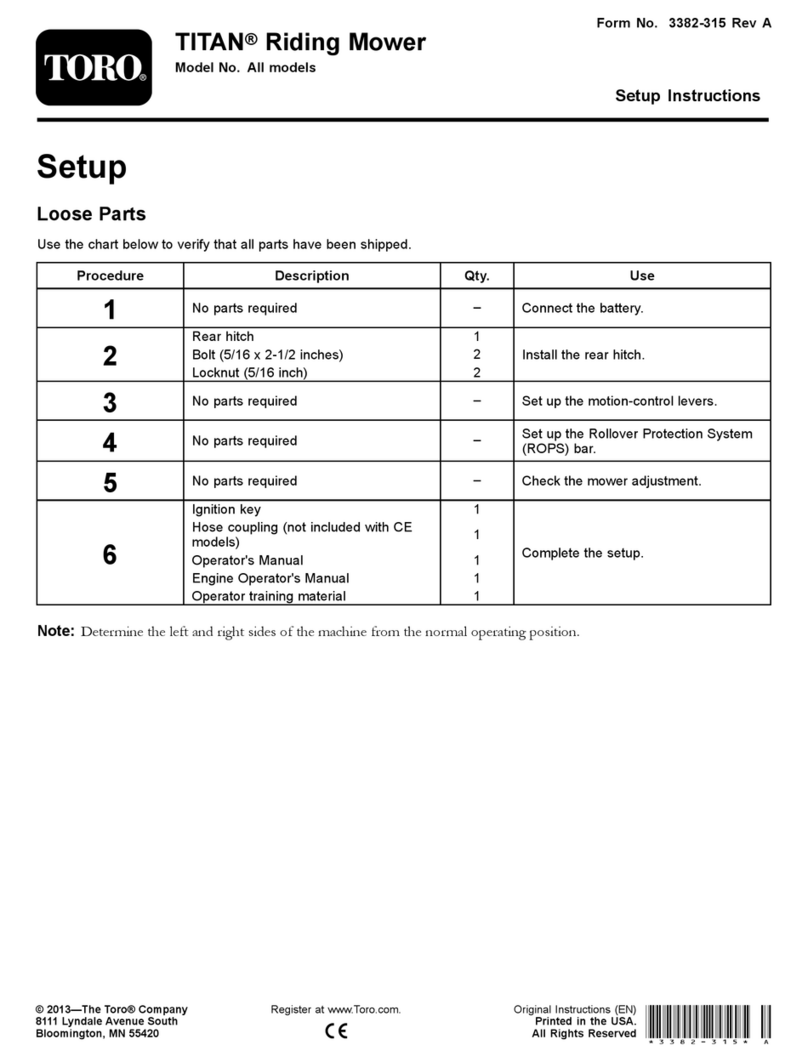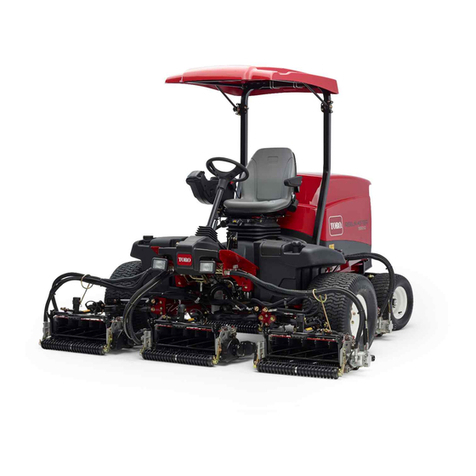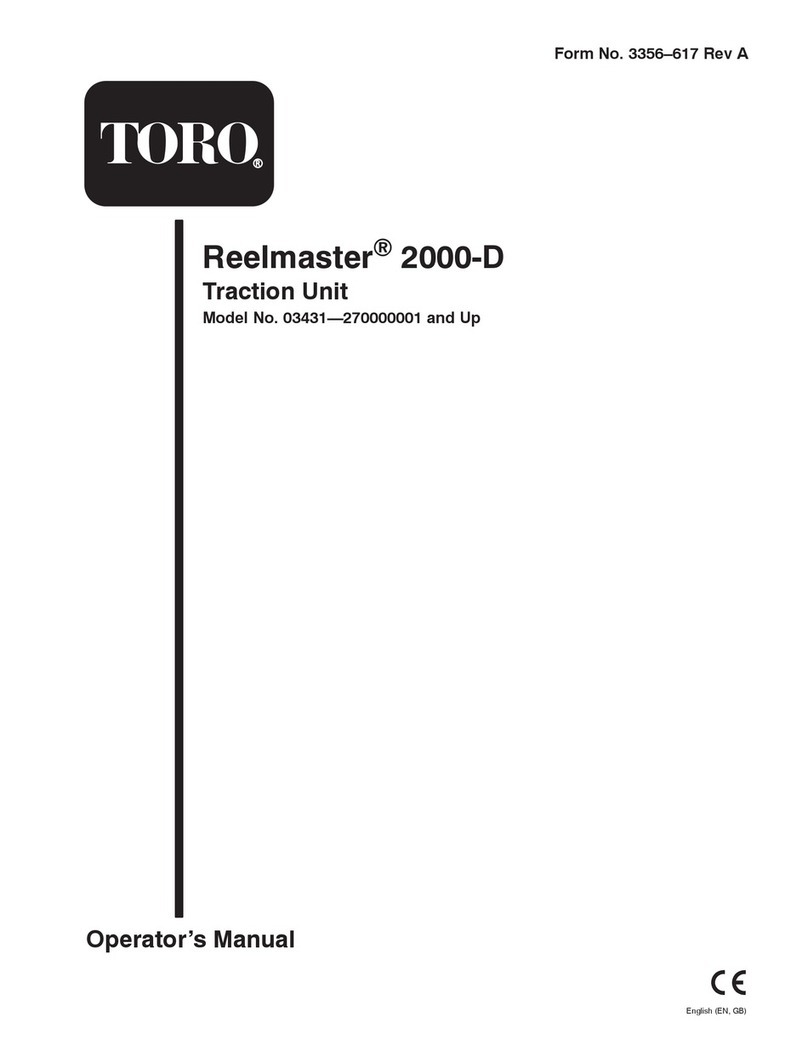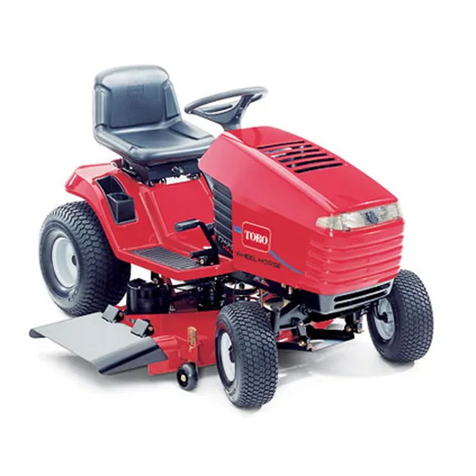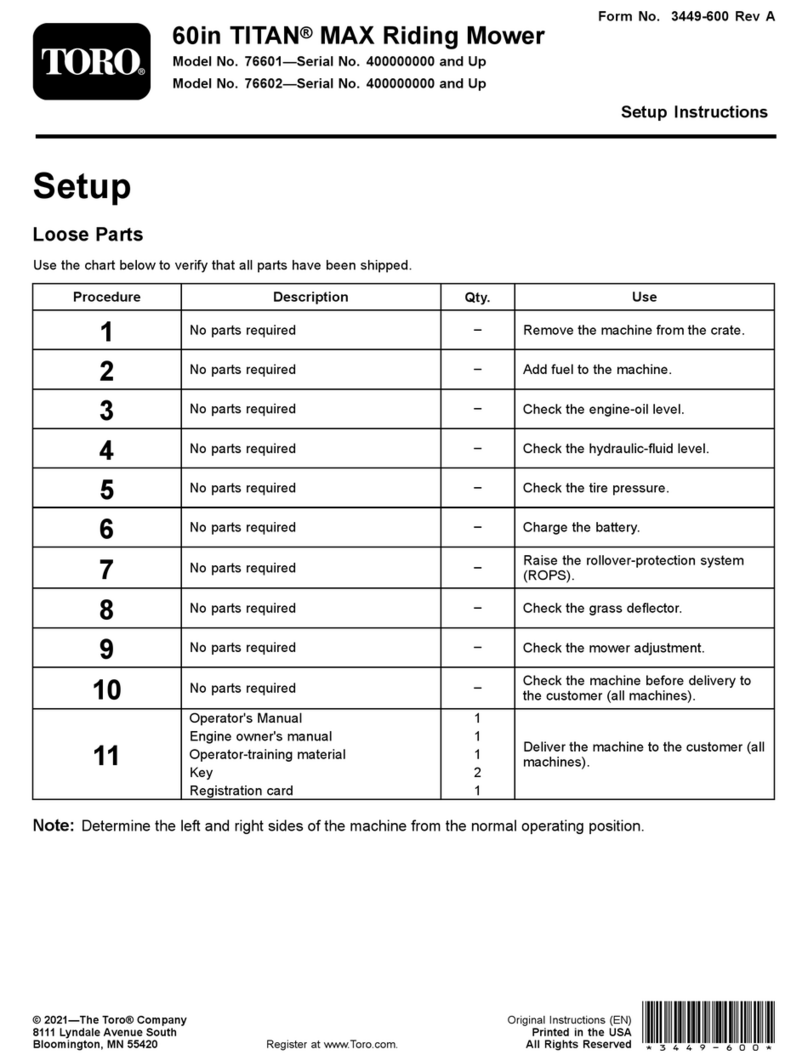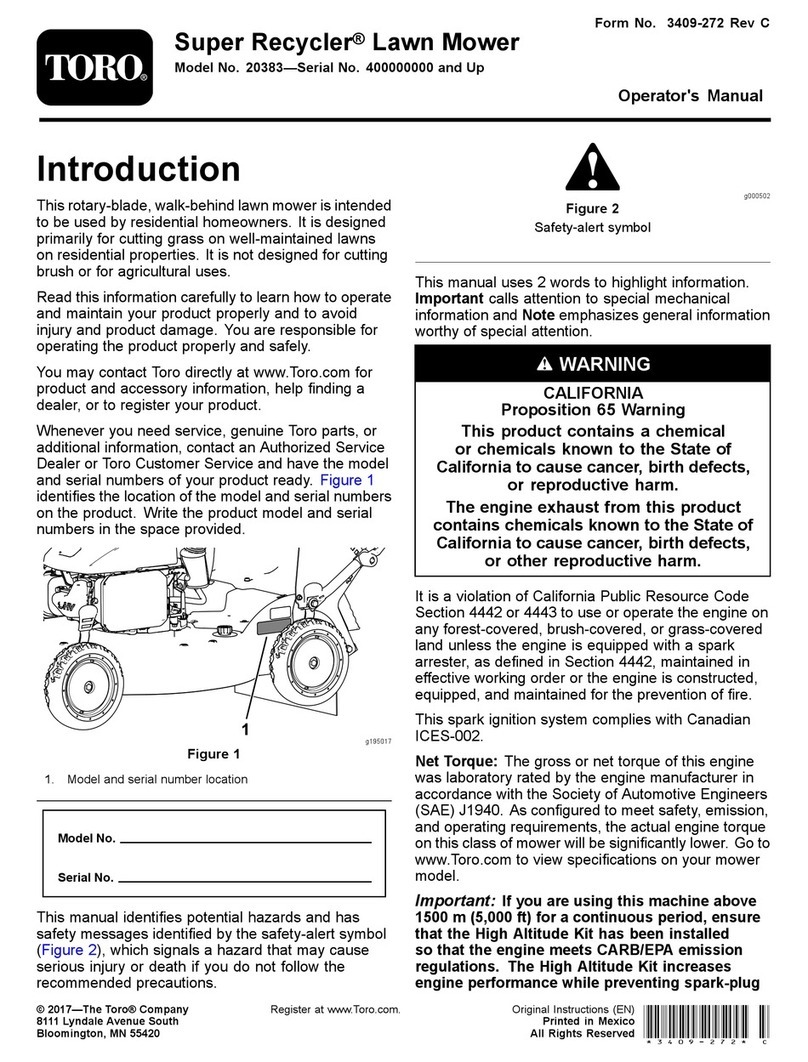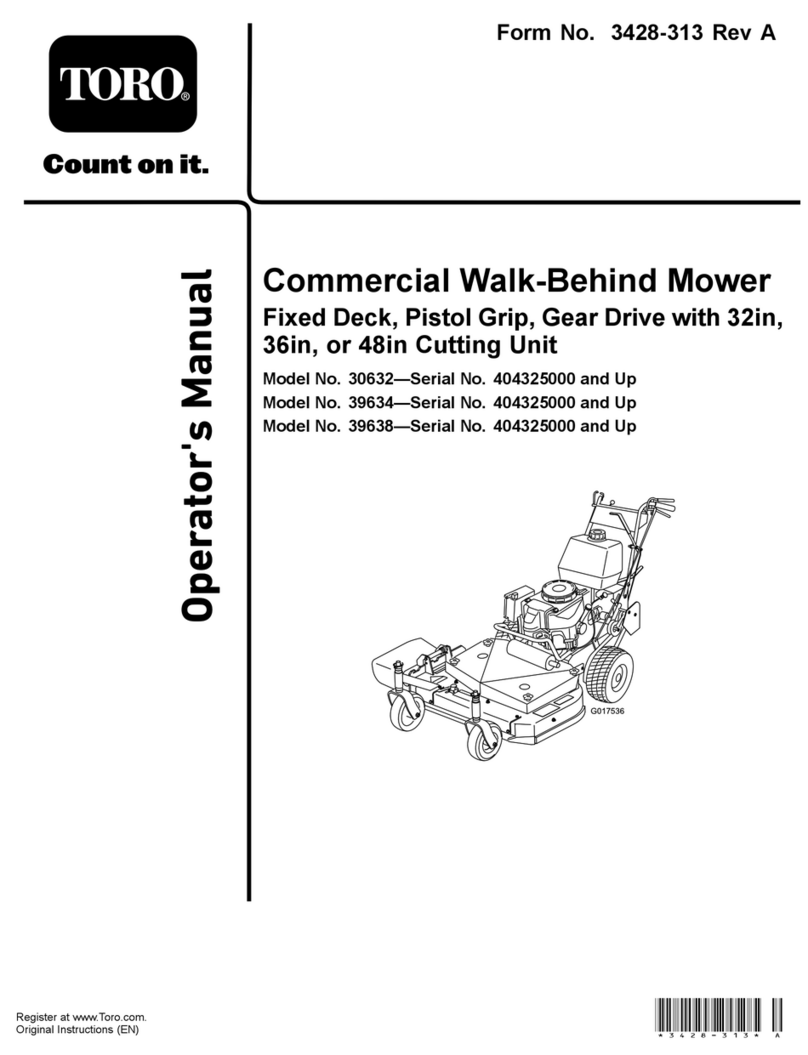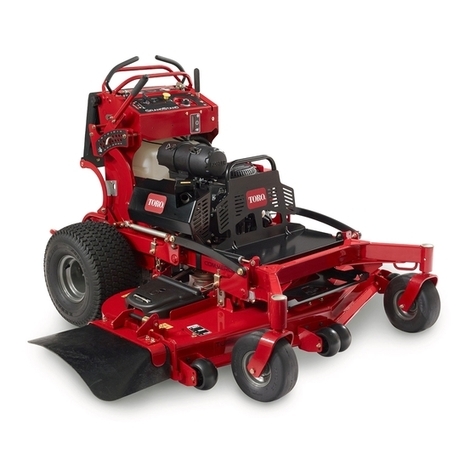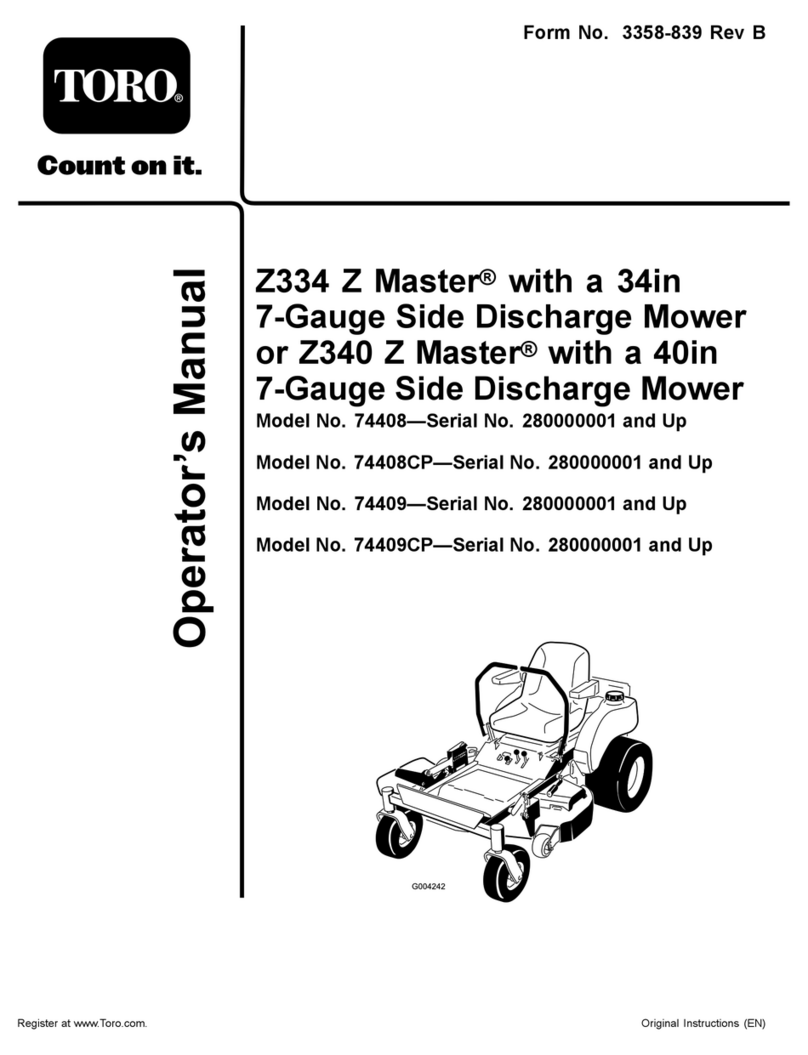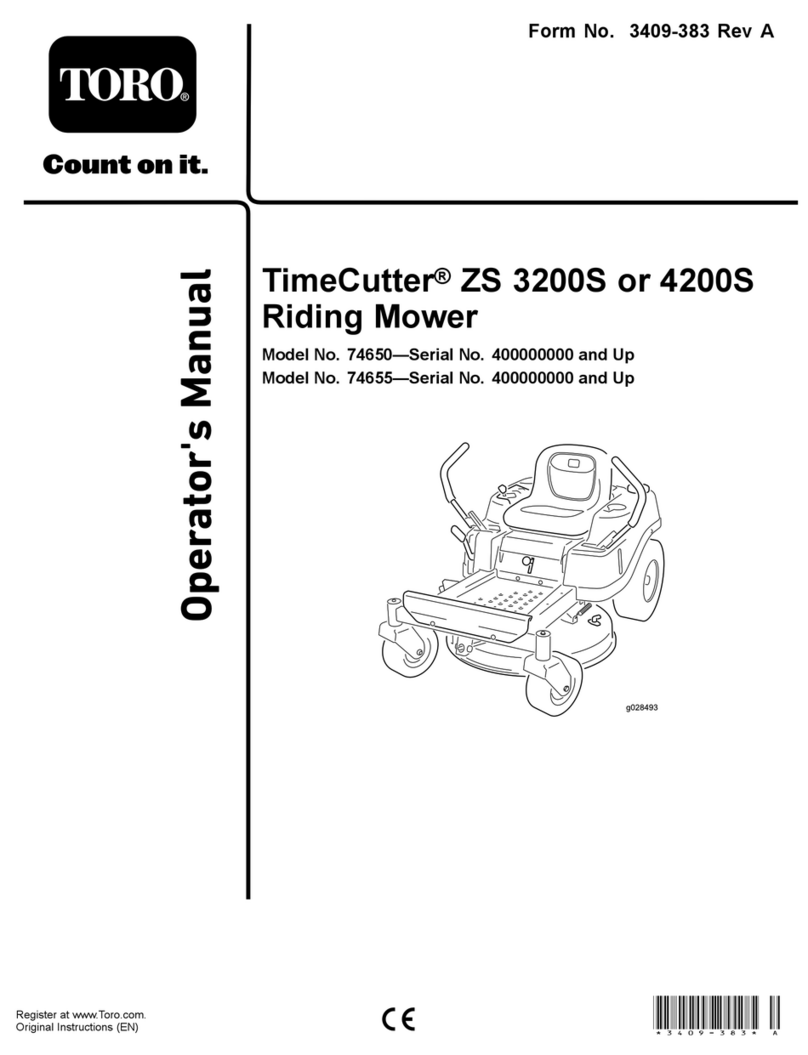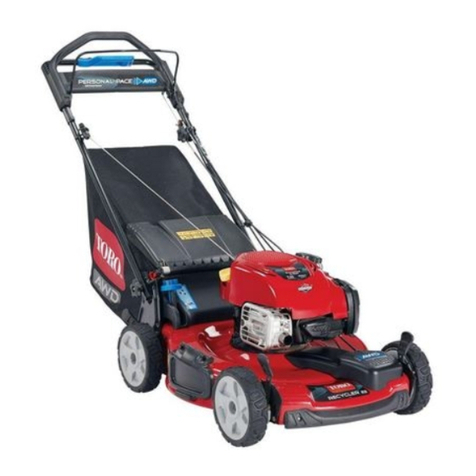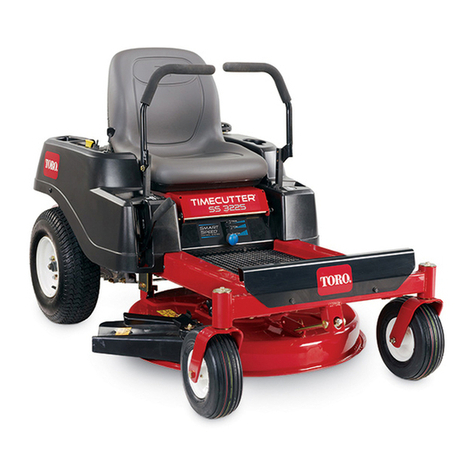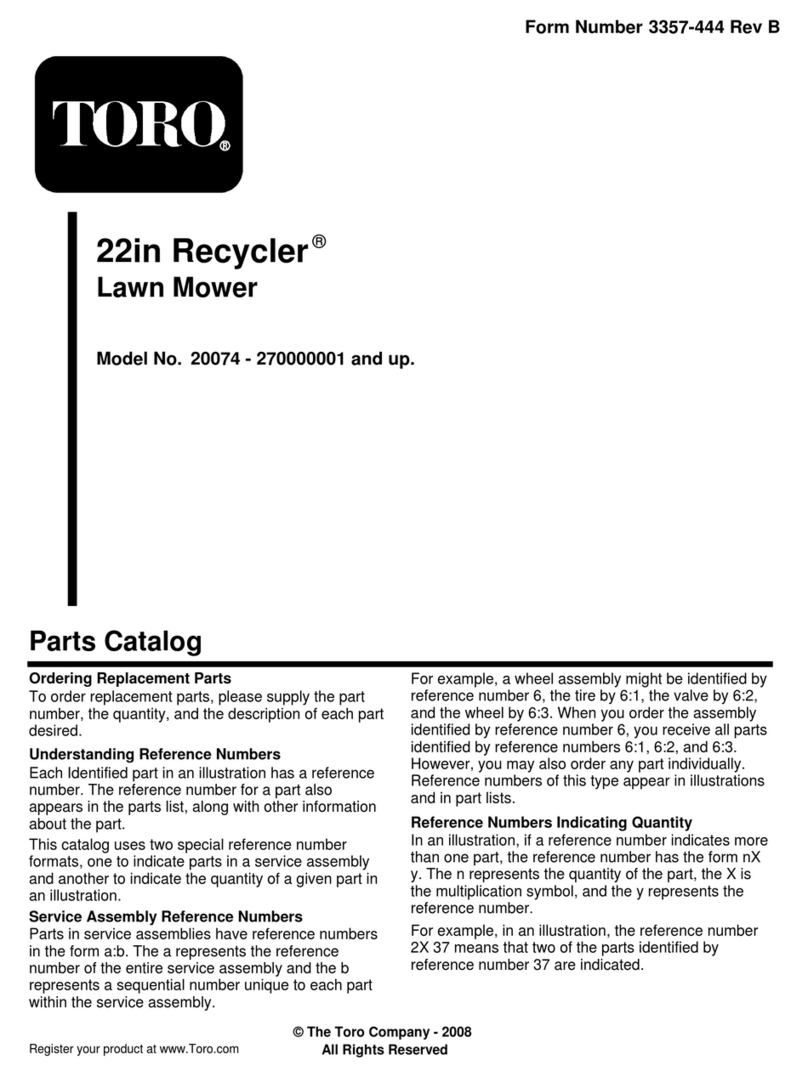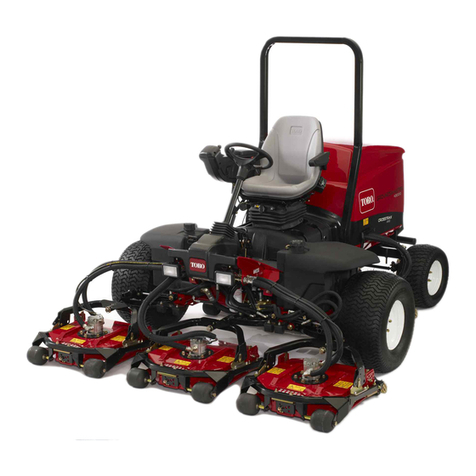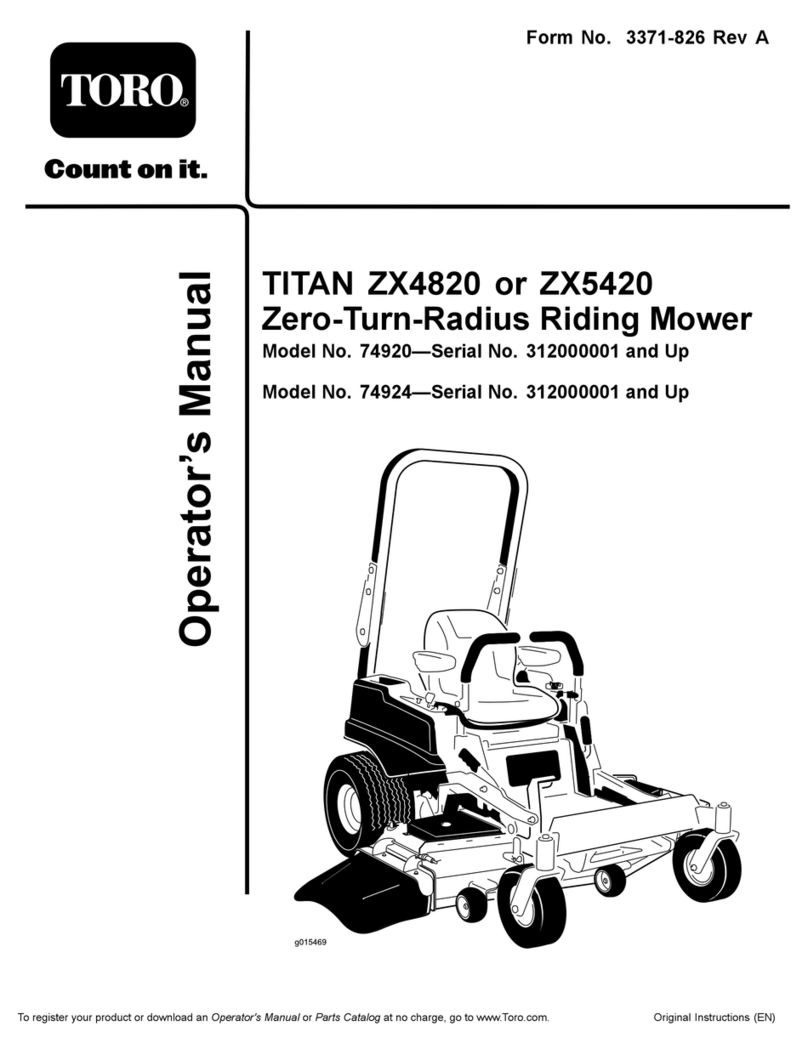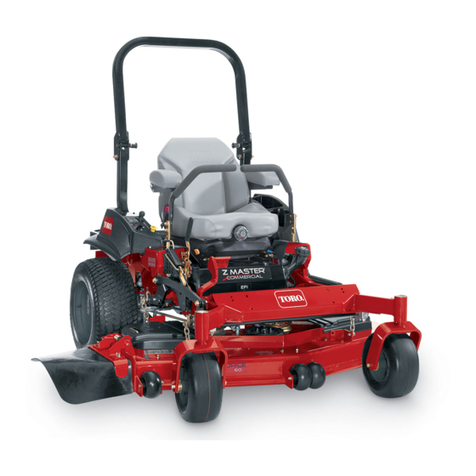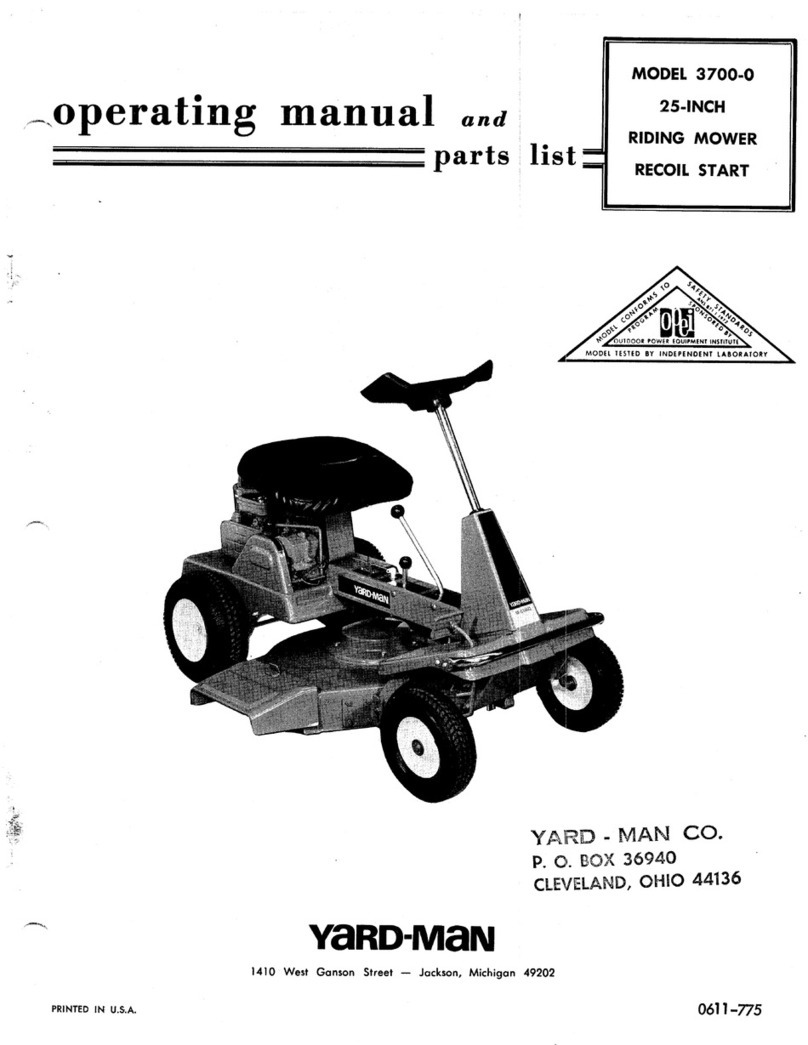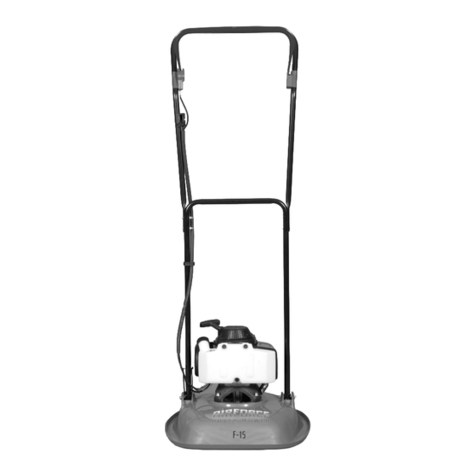
•Carefully release pressure from components
with stored energ y .
•Disconnect batter y and remo v e spark plug
wire before making any re pairs . Disconnect
the neg ati v e ter minal first and the positi v e last.
R econnect positi v e first and neg ati v e last.
•Use care when c hec king the reel. W ear glo v es
and use caution when ser vicing them.
•K ee p hands and feet a w a y from mo ving par ts .
If possible , do not mak e adjustments with the
engine r unning .
Toro Mower Safety
T he follo wing list contains safety infor mation
specific to T oro products or other safety
infor mation that y ou m ust kno w that is not
included in the CEN , ISO , or ANSI standard.
T his product is capable of amputating hands and
feet and thro wing objects . Alw a ys follo w all safety
instr uctions to a v oid serious injur y or death.
Use of this product for pur poses other than its
intended use could pro v e dang erous to user and
b ystanders .
•Kno w ho w to stop the engine quic kly .
•Do not operate the mac hine while w earing
tennis shoes or sneak ers .
•W earing safety shoes and long pants is advisable
and required b y some local ordinances and
insurance regulations .
•Handle g asoline carefully . Wipe up any spills .
•Chec k the safety interloc k switc hes daily
for proper operation. If a switc h should
fail, re place the switc h before operating the
mac hine . After ev er y tw o years , re place
all interloc k switc hes in the safety system,
reg ardless if they are w orking properly or not.
•Alw a ys stand behind the handle when star ting
and operating the mac hine .
•T o star t and stop the engine:
– Open fuel shut-off v alv e .
– V erify that the traction and reel dri v e
control lev ers on handle are in Neutral
position.
– Mo v e on/off switc h to ON position, set
c hok e to full c hok e position (cold star t)
and throttle to half throttle .
– Pull star ter cord to star t engine .
– Mo v e throttle to Slo w and on/off switc h to
Off position to stop engine .
•T o transpor t mo w er from one area to another :
– Install transpor t wheels .
– Diseng ag e reel dri v e .
– Star t engine .
– Press do wn on handle to raise front of
mo w er and eng ag e traction dri v e .
•Before beginning mo wing operation:
– Diseng ag e traction dri v e .
– Stop engine .
– R emo v e transpor t wheels .
– Star t engine
– Eng ag e reel dri v e .
•Using the mac hine demands attention. T o
prev ent loss of control:
– Do not dri v e close to sand traps , ditc hes ,
creeks , or other hazards .
– R educe speed when making shar p tur ns .
A v oid sudden stops and star ts .
– W hen near or crossing roads , alw a ys yield
the right-of-w a y .
– Apply the ser vice brak es when g oing
do wnhill to k ee p forw ard speed slo w and
to maintain control of the mac hine .
•T he g rass bask et m ust be in place during
operation of the reels or thatc hers for
maxim um safety . Shut the engine off before
emptying the bask ets .
•Do not touc h the engine , m uffler , or exhaust
pipe while the engine is r unning or soon after
it has stopped because these areas could be hot
enough to cause bur ns .
•Sta y clear of the rotating screen at the side of
the engine to prev ent direct contact with y our
body or clothing .
•W hen a person or pet appears unexpectedly
in or near the mo wing area, stop mo wing .
Careless operation, combined with ter rain
angles , ricoc hets , or improperly positioned
guards can lead to thro wn object injuries . Do
not resume mo wing until the area is cleared.
Maintenance and Storage
•Chec k all fuel lines for tightness and w ear on a
regular basis . Tighten or re pair them as needed.
6
